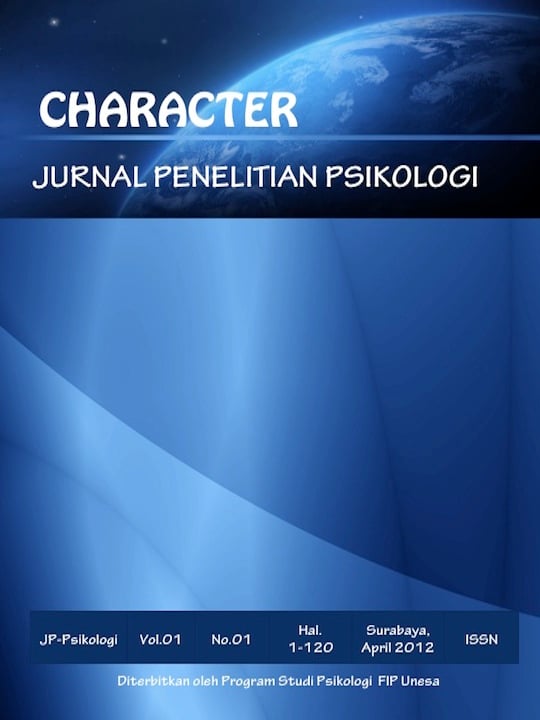HUBUNGAN ANTARA EKUITAS MEREK DENGAN KEPUTUSAN PEMBELIAN HAND SANITIZER MEREK X PADA IBU RUMAH TANGGA
DOI:
https://doi.org/10.26740/cjpp.v8i9.48045Abstract
AbstrakLatar belakang penelitian ini didasari oleh pentingnya penggunaan hand sanitizer sebagai salah satu alternative upaya menjaga kebersihan tangan dalam rangka pemutusan rantai penyebaran virus Covid-19 pada masa new normal. Hal ini menyebabkan meningkatnya pembelian dan muncul beragam merek baru hand sanitizer yang dapat mempengaruhi ekuitas merek. Ekuitas merek yaitu segala hal yang menjadi nilai tambah pada merek yang terlihat pada perasaan, pikiran, dan proses memutuskan yang dilakukan konsumen terhadap merek. Tujuan dari penelitian ini adalah untuk mengetahui adanya hubungan antara ekuitas merek pada hand sanitizer merek X dengan keputusan pembelian hand sanitizer. Penelitian ini merupakan jenis penelitian kuantitatif. Populasi dalam penelitian yaitu seluruh ibu rumah tangga sebanyak 115 orang di Desa X. Sampel ditentukan menggunakan teknik purposive sampling dengan kriteria ibu rumah tangga berusia 21-50 tahun dan melakukan pembelian hand sanitizer selama pandemi kemudian diperoleh sampel penelitian sebanyak 90 orang. Instrumen dalam penelitian ini menggunakan ekuitas merek oleh Aaker (1991) dan skala keputusan pembelian oleh Kotler dan Keller (2012). Analisis data dalam penelitian menggunakan teknik correlation pearson product moment melalui program SPSS 25.0 for Windows. Hasil dari penelitian menunjukkan terdapat hubungan yang sangat kuat dan signifikan antara ekuitas merek dengan keputusan pembelian dengan nilai signifikansi 0.000<0.05 (p<0.05) dan nilai koefisien sebesar 0.884 atau (r=0.884).
Kata Kunci: Ekuitas Merek, Keputusan Pembelian, Ibu Rumah Tangga.Abstract
The background of this research is based on the importance of using hand sanitizers as an alternative to maintaning hand hygiene to break the chain of spreading the Covid-19 virus during the new normal period. This has led to increased purchases and the emergence of new brands of hand sanitizers that can affect brand equity. Brand equity that is anything that adds value to a brand that is seen in the feelings, thoughts, and decision process that consumers do with the brand is called brand equity. The purpose of this study is to determine the relationship between brand equity and purchasing decisions in brand X hand sanitizers. The population in the study was all housewives as many as 115 people in X Village. The sample was determined using a purposive sampling technique with the criteria of housewives aged 21-50 years and purchasing hand sanitizers during the pandemic, then a study sample of 90 people was obtained. The instruments in this study used brand equity by Aaker (1991) and a scale of purchasing decisions by Kotler and Keller (2012). Data analysis in the study used the Pearson product moment correlation technique through the SPSS 25.0 for Windows program. The results of the study showed that there was a very strong and significant relationship between brand equity and purchasing decisions with a significance value of 0.000<0.05 (p<0.05) and a coefficient value of 0.884 or (r= 0.884).
Keywords: Brand Equity, Purchase Decision, Housewife
Downloads
Downloads
Published
How to Cite
Issue
Section
License
Authors who publish in this journal agree to the following terms:
Copyright in any article is held by the author.
The author grants the journal, publication rights with the work simultaneously licensed under a Creative Commons Attribution License that allows others to share the work with an acknowledgment of the work's authorship and initial publication in this journal.
Authors may enter into separate, additional contractual arrangements for the non-exclusive distribution of the journal's published version of the work (e.g., posting it to an institutional repository or publishing it in a book), with an acknowledgment of its initial publication in this journal.
Authors are permitted and encouraged to post their work online (e.g., in an institutional repository or on their website) prior to and during the submission process, as this can lead to productive exchanges, as well as earlier and greater citation of published work.
 Abstract views: 133
,
Abstract views: 133
, PDF Downloads: 148
PDF Downloads: 148





